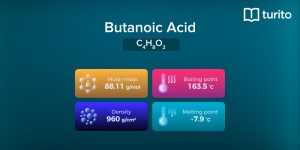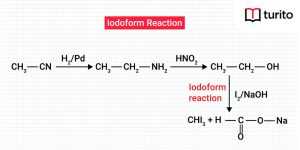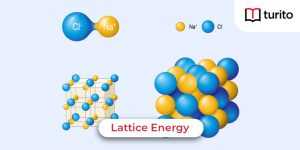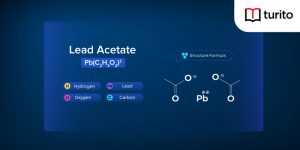Schiff Bases
Schiff bases are a huge category of compounds differentiated by the presence of a double bond connecting the carbon and nitrogen atoms, giving them their adaptability, which is produced by the many ways they can combine with different alkyl or aryl substituents. This compound can be discovered in nature and created in a lab.
Many scientists and biochemists have long found enormous inspiration in Schiff bases. In this text, we try to offer a fresh perspective on this class of chemicals by emphasizing the meaning, formation, and uses of different Schiff bases.
What is Schiff Base?
Hugo Schiff, a German scientist, is credited with being the first to characterize the byproducts of the reaction between primary amines and carbonyl compounds in 1864, giving rise to the moniker “Schiff’s base.”
As per the advice of the IUPAC, Schiff bases are referred to as chemical compounds (imines) with a hydrocarbyl group on the nitrogen atom R2C = NR′ (R′ H). They are frequently thought of as being equivalent to azomethines.
- According to Hugo Schiff, Schiff base is a molecule with the general formula R1R2C=NR’ (R’ H).
- Depending on their structural composition, they can be categorized as either secondary aldimines or secondary ketimines, which is a subclass of imines.
- These are organic products created when an aldehyde or ketone reacts with a primary amine; for example, hydroxycitronellal synthesis Schiff base when methyl anthranilate reacts to aurantiol.
So, how to define Schiff base? Schiff base is a chemical compound generated from the condensation reaction between a primary amine and an aldehyde creating water as its byproduct. Methyl and ethyl anthranilates, which are amines, are frequently used in the fragrance business. Terpene aldehydes, such as hydroxycitronellal, are popular aldehyde compounds used in fragrances.
Schiff Base Formation
Schiff reported on the first imine formulation in the 19th century (1864). Since then, numerous techniques for creating imines have been detailed. In the conventional synthesis described by Schiff, an amine and a carbonyl molecule are condensed via azeotropic distillation. The remaining water generated in the system is subsequently removed using molecular sieves.
Schiff base formation: In the 1990s, an in situ water removal technique was created, employing dehydrating solvents including trimethyl orthoformate and tetramethyl orthosilicate to remove the water completely from the solution. In 2004, Chakraborti et al. showed that using strongly electrophilic carbonyl compounds and highly nucleophilic amines is necessary for these approaches to be effective.
As an alternative, they suggested using compounds that serve as Brönsted-Lowry or Lewis acids to catalyze the nucleophilic attack by amines, dehydrate the system, and stimulate the carbonyl group of aldehydes. The last step would be to remove water. Brönsted-Lowry or Lewis acids, such as ZnCl2, TiCl4, MgSO4-PPTS, Ti(OR)4, alumina, H2SO4, MgSO4, NaHCO3, H3CCOOH, Mg(ClO4)2, P2O5/Al2O3, Er(OTf)3, and HCl, are used to create Schiff bases.
In the last few years, various innovative techniques and methods have been discovered for the formation of Schiff bases, including solvent-free/clay/microwave irradiation, K-10/microwave, solid-state synthesis, water suspension medium, [bmim] BF4/molecular sieves, NaHSO4SiO2/microwave/solvent-free, infrared irradiation/no solvent, solvent-free/CaO/microwave, and silica/ultrasound irradiation.
Microwave irradiation is one of these innovations that has seen widespread usage because of its excellent selectivity, improved reaction rates, and ease of operation. The parallel studies conducted by the Rousell and Majetich groups marked the beginning of the application of microwave irradiation. Due to the elimination of the Dean-Stark equipment for azeotropic water removal and the excess use of aromatic solvents, microwave irradiation is much less harmful to the environment than other processes.
Uses of Schiff Base
Schiff bases are some of the most popular organic compounds. They are employed as dyes and pigments, catalysts, steps in synthesizing organic compounds, and stabilizers of polymers. Schiff bases demonstrate a wide spectrum of biological activities, such as antibacterial, antifungal, antimalarial, anti-inflammatory, antiproliferative, antiviral, and antipyretic.
Imine or azomethine groups exist in various organic, naturally derived, and synthetic substances. It has been proven that the imine group in these compounds is essential for their biological actions.
Biological Applications
Antimalarial Activity
Malaria is an overlooked disease that continues to impact public health significantly negatively. The disease affects over 500 million people annually, killing between 1-3 million of them, mostly children in sub-Saharan Africa. Currently, malaria is present in more than 100 nations in Africa, Asia, Latin America, and Oceania.
Plasmodium is responsible for human malaria (P. falciparum, P. ovale, P. vivax, and P. malariae). The vector of Plasmodium is a female mosquito belonging to the genus Anopheles. Finding new medications, vaccines, and treatments to cure or prevent this disease is a primary concern.
It has been demonstrated that Schiff bases are a useful moiety for creating antimalarial drugs. Schiff’s bases are a great starting point for creating antimalarial drugs. Schiff base 5 is the strongest antimalarial drug among synthetic bases.
Antibacterial Activity
Bacteria that display multiple antibiotic resistance are closely linked to the rise in the mortality rate of infectious illnesses. The main reason for this problem is the lack of efficient therapies. There is unquestionably an immediate medical need to create new antibacterial drugs with inventive and more effective modes of action.
Schiff’s bases have shown promise as antibacterial substances. N-(salicylidene)-2-hydroxyproline, for instance, can be used to treat Mycobacterium efficiently.
Aside from natural and synthetic compounds, 1,2,4-triazoles, amino thiazolyl Bromo coumarins, coumarins, crown ethers, sulfonamides, or resacetophenone, O-phthalaldehyde, or 2-aminophenol, and coumarins all serve as platforms for the production of Schiff bases with antibacterial activity.
Antifungal Activity
Fungal infections are not typically restricted to the surface tissues; a considerable rise in systemic fungal infections that can be fatal has been noted.
The primary cause of the development is the rising number of people at risk, such as those who are older, have recently undergone major organ surgery, are receiving immunosuppressive medicine, have been treated for cancer, or have received solid-organ and hematopoietic cell transplants.
Finding and creating more powerful antifungal medicines is imperative, and several Schiff bases are recognized as having antifungal potential. It has been demonstrated that fungi such as Aspergillus fumigatus, Aspergillus flavus, Trichophyton mentagrophytes, and Penicillium marneffei are inhibited by Schiff bases containing a 2,4-dichloro-5-fluorophenyl moiety.
Antiviral Activity
Vaccination could result in the elimination of viral diseases, including rubella, polio, and smallpox. However, the shortcomings of vaccine systems have been a major drawback for virus-related illnesses and hepatitis C human immunodeficiency diseases. For immunocompromised individuals, viral illnesses provide a life-threatening danger, and this issue needs to be resolved quickly.
Although there are numerous therapeutic alternatives for viral infections, the antiviral medications currently on the market are still not completely successful, most likely because of the high percentage of virus mutations. They might also develop a range of undesirable impacts.
Schiff bases have proven to be a critical step toward creating new antiviral drugs, and these are Schiff bases of 1-amino-3-hydroxyguanidine to sylate salicylaldehyde. For example, compound 54, created from various Schiff bases obtained from 1-amino-3-hydroxy guanidine tosylate, was demonstrated to be highly efficient towards mouse hepatitis virus (MHV), suppressing development by 50% when used at concentrations as low as 3.2 μM.
Conjugated Schiff Bases
Conjugated Schiff Bases have been employed in electronics such as the Perovskite solar cells, organic field-effect transistors, and electrochromic devices because they offer intriguing optoelectronic features. These are also employed in producing the covalent organic matrix, which is employed in gas storage.
Conclusion
Schiff bases have been extensively researched for industrial uses. Scientists should do further research on this class of chemicals’ biological activities. When plant pathogens are taken into account, this is made evident.
Even though there is little research on this topic, more papers have recently revealed how the Schiff bases affect microorganisms of therapeutic concern. It has been demonstrated that Schiff base compounds are viable starting points for developing more effective antibacterial drugs. Analysis of the links between the Schiff bases’ structure and activity and their mode of action will be necessary for this research to advance.
Frequently Asked Questions
1. What purpose does the Schiff test serve?
The Schiff test is a chemical procedure that determines whether an analyte contains aldehydes. It is accomplished by reacting a little amount of the analyte with a Schiff reagent (the product produced in specific dye formulation reactions such as the chemical reaction between sodium fuchsin and bisulfite).
2. Explain the synthesis process of Schiff base.
Schiff bases are synthesized when any primary amine interacts with an aldehyde or a ketone under particular circumstances. In other words, it is a carbonyl group substituted azomethine or imine in a nitrogen analog of a ketone or aldehyde.
Schiff created imines for the first time in the 19th century. Schiff created Schiff Bases using a conventional method, which requires the condensation of a carbonyl compound with the aid of an amine under azeotropic distillation. Molecular sieves are utilized to eliminate any water that may have developed in the solution. Later on, scientists developed numerous methods of synthesizing Schiff bases.
3. Which acid can produce Schiff’s base if any?
The synthesis of substituted sulfamethoxazole compounds was carried out using the conventional procedure for synthesizing Schiff’s bases in an ethanolic solution using glacial acetic acid as a catalyst.
4. Name some significant Schiff base uses?
Schiff bases are one of the most frequently used classes of organic molecules and are widely used in many areas of chemistry, including biological, analytical, and inorganic chemistry. Due to a wide range of biological actions like analgesic, anti-inflammatory, antibacterial, antitubercular, anticonvulsant, anthelmintic, anticancer, antioxidant, and so forth, Schiff bases have become more significant in the medical and pharmaceutical fields.

Relevant Articles
Butanoic Acid – Structure, Properties, Uses
Butanoic Acid The carboxylic acid, butanoic acid, has the structural …
Butanoic Acid – Structure, Properties, Uses Read More »
Read More >>What is Iodoform? Characteristics and Uses
Iodoform The formula for Iodoform is CHI3. It is biotic …
What is Iodoform? Characteristics and Uses Read More »
Read More >>Lattice Energy – Explanation, Factors & Formulas
Lattice Energy Lattice energy evaluates the intensity of the ionic …
Lattice Energy – Explanation, Factors & Formulas Read More »
Read More >>Lead Acetate – Definition, Properties, Uses
Lead Acetate Have you ever licked lipstick when you sketch …
Lead Acetate – Definition, Properties, Uses Read More »
Read More >>




















Comments: